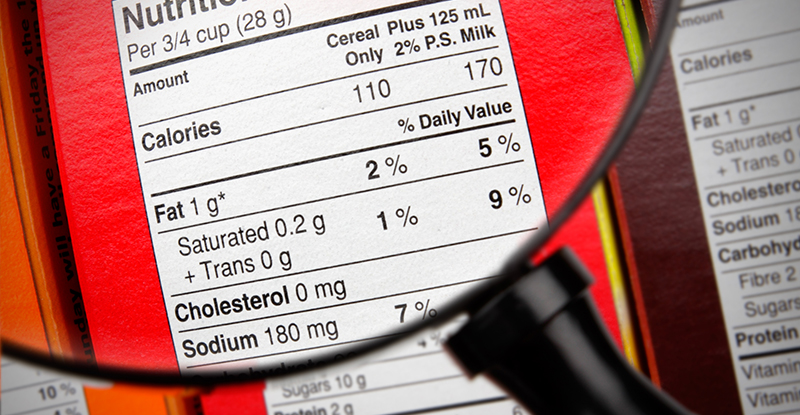How to read food nutrition labels
Learn more about the updates to the current nutrition facts labels estimated to take place in 2018.
Have you ever stood in front of the grocery store’s mile-long shelves and thousands of choices, puzzling over a food label? Have you wondered, “Is that too much fat? What about sodium? It seems like a lot, but how much should I eat?”
Let’s take an in-depth look at an average food label, and try to decode some of it!
1. Serving information
This is the first thing to look at on the label. The rest of the information on the label is based on the serving size listed. So if the serving size is half a cup, but you eat one cup, you are eating twice the amount of all the nutrients and calories listed! This will also tell you how many servings are in the whole container.
2. Calorie information
Calories come from three main “macronutrients:” fat, carbohydrates, and protein. Many people count calories to help them manage their weight. “Calories from fat” does not tell you the total calories in the food; only the amount of calories that food contains from fat.
3. Fat
“Total fat” tells you how many grams of all the kinds of fat there is in that food. Most people need about 40-60 grams of fat each day (or about 25 to 35 percent of their total calories). Below total fat, you will see “saturated fat” and “trans fat.” These fats tend to increase LDL cholesterol (your “bad” cholesterol). Saturated fat can be consumed in amounts up to 10 percent of your total calories (that’s about 22 grams for a 2000-calorie diet) per day. Trans fat should be avoided if at all possible. Learn how to identify trans fat here.
4. Cholesterol
Cholesterol is a waxy substance that is found normally in the bloodstream. When cholesterol is too high, the risk of heart disease increases because cholesterol can clog arteries. Cholesterol in food isn’t the main reason for high cholesterol, but it does contribute. Limiting the amount of cholesterol you eat is a good idea, particularly if you already have high cholesterol. All animal products contain cholesterol naturally. The recommendation is 300 mg or less per day.
5. Sodium
Sodium content is important, especially for those with high blood pressure. The recommendation for total sodium intake is 2,400 mg per day, but if you have high blood pressure, are over 50 years old, or have a family history of high blood pressure, the recommendation is 1,500 mg per day. A good rule of thumb is to avoid entrees with more than 800 mg of sodium, and avoid other foods with more than 400 mg of sodium per serving.
6. Carbohydrates
Total carbohydrates are made up of sugars and dietary fiber. “Sugars” include both naturally occurring sugars (like the sugar in fruit and milk), and added sugars. Be sure to check the ingredient list to see if the sugars are added or naturally occurring.
Most of us do not consume the recommended amount of at least 25 grams of dietary fiber per day. Foods with at least 5 grams are considered high fiber sources. Foods with at least 2 grams of fiber are considered good sources of fiber. Most fruits, vegetables, and whole grains are good sources of fiber.
7. Protein
Eating enough protein is not a problem for the average American. Just five to seven ounces of meat or protein per day is adequate, but most people eat far more. For a healthy adult, about 20 percent of your total calories should come from protein (that’s about 100 grams per day for an average 2000 calorie diet). Sources of protein are animal meat, dairy products, dried beans and peas, and nuts and seeds.
8. Other important nutrients
Most Americans do not consume enough vitamin A, vitamin C, calcium, or iron. That’s why these nutrients are listed on the label. The nutrients are listed in percentages, and are based on a 2000-calorie diet, so if you need more or fewer calories, the percentages may be off a little. In general, five percent or less of the daily value is low, and 20 percent or more of the daily value is high for any single nutrient. It is rare to find a food that is a good source of more than one or two nutrients, so it is wise to eat a wide variety of foods every day.
You may see other nutrients listed, depending on the food item, but the nutrients we mentioned are required by law to appear on the label. Remember that good nutrition is about the big picture — the total of everything you eat throughout the whole day — but these guidelines can help you make informed choices about what you want to make room for in your daily eating plan, and what you want to leave for special occasions only.




